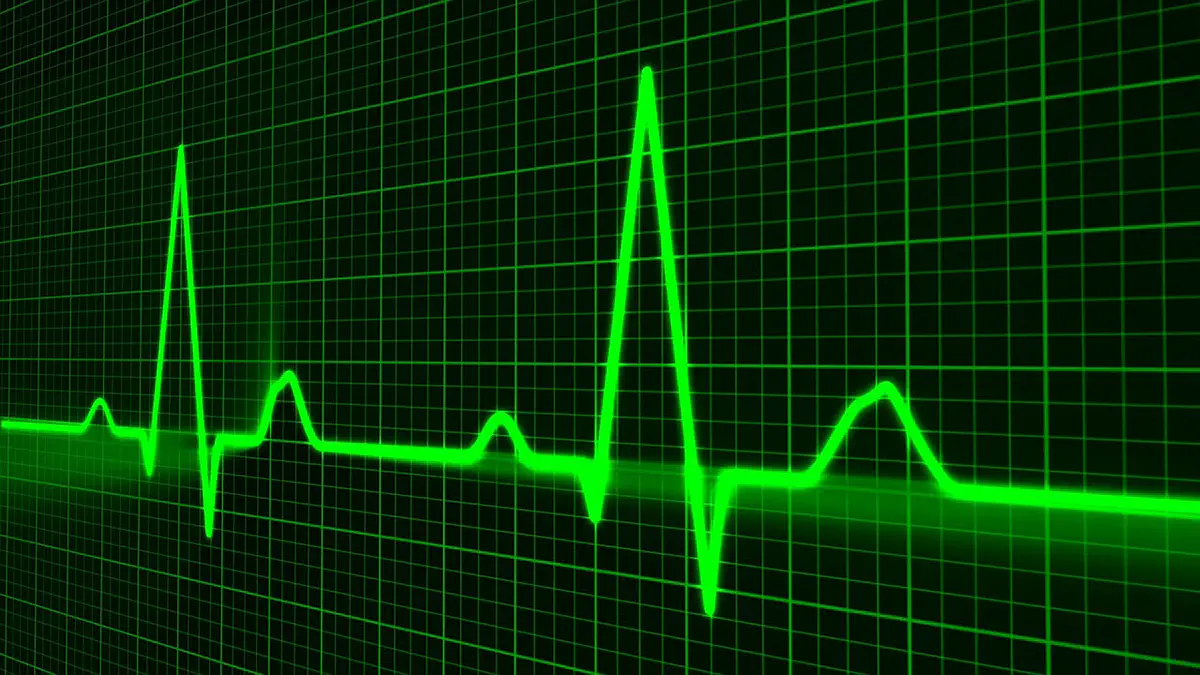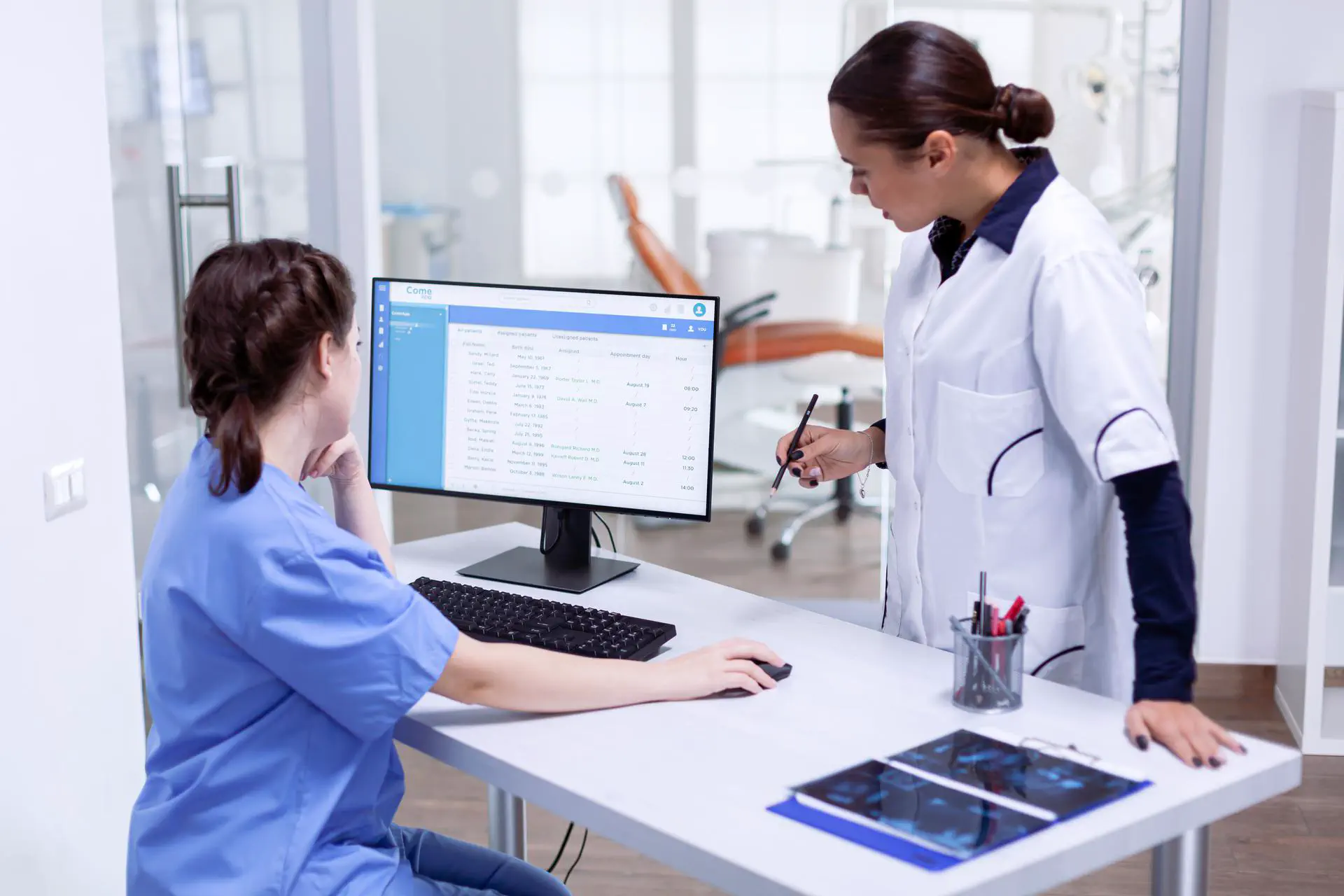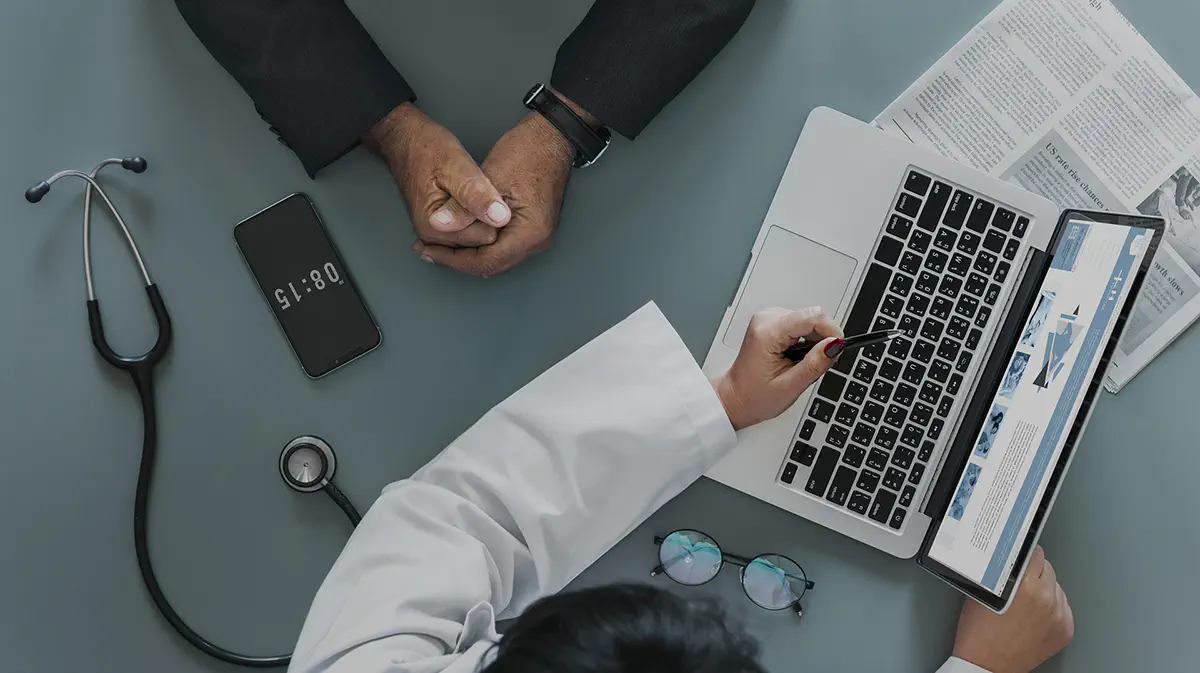Data Strategy for Digital Transformation in the Medical Industry

As technology blurs the line between digital and physical medical care, private practices and doctors must start using technology to promote the intimate connection necessary in doctor-patient relationships. More than 95% of non-federal acute care hospitals used information technology for health care today. Technology in medicine is widespread and growing, redefining how we think about healthcare.
To efficiently implement the achievements of medical software development in day-to-day practice, be aware of the opportunities this evolution allows and consider all of them when developing a unique strategy.
Developing trends in Healthcare industry
Telehealth
Telehealth is a new industry that combines doctor availability with remote accessibility. Different platforms offer doctors who can chat (via video or text) with patients about a variety of issues. These doctors on demand can be general physicians or any type of specialist. Often, telehealth can even include robotic chatbots who can help with very basic health needs.
Another type of telehealth is remote care with one’s existing doctor. For instance, if you have a relationship with a doctor and want to follow up on a visit or connect about a health issue for another reason, many providers offer platforms that will allow patients to directly communicate with their doctor.
Telehealth has been praised for increasing the overall accessibility of the overall populace to healthcare as well as decreasing ER visits.
Information technology
The advent of electronic health records (EHRs) has shifted the way that medical records are stored and accessed. EHRs are now stored in the cloud, making it easy to access them quickly and scale their use. Patients can now view their health records and information through online platforms, which can help them make informed decisions about their healthcare.
Medical devices
Wearable medical devices have become increasingly popular in recent years, and for good reason. They allow individuals to track their physical activity, monitor their sleep patterns, and even measure their heart rate and blood pressure. This data can be invaluable in helping individuals understand their health status and make informed decisions about their lifestyle choices.
In addition to personal use, wearable medical devices are also being used in clinical settings to monitor patients remotely. This can be particularly helpful for patients with chronic conditions, as it allows doctors to monitor their health status and adjust their treatment plans as necessary.
Marketing
Digital marketing has the potential to revolutionize the medical industry, and yet this opportunity is often overlooked. Social media platforms, for instance, can be utilized to connect doctors with patients and to share health information and tips in a way that is both engaging and accessible.
Through social media, patients can learn about healthy habits, get advice on how to manage their conditions, and even connect with other patients who are going through similar experiences. Digital marketing also allows healthcare providers to gauge responses from consumers and learn more about their needs and preferences. For example, analytics tools can be used to track engagement with social media content and measure the impact of specific marketing campaigns. This data can then be used to refine marketing strategies and create more targeted content that resonates with patients.
Research and development
Innovation is ever increasing! It’s important to consider the benefits of investing in research and development. The future and implications of ideas like healthcare robotics and machine learning are still in their infancy but quickly growing with a lot of potential for decreasing the cost and increasing the quality of healthcare while influencing the doctor-patient relationship.
Big data
These innovations that we have seen in recent years in the medical industry have transformed healthcare. They each appeal to a different niche of health needs and desires, but what similarly spans across all of them is the data they collect about consumers. While services like telehealth mean that we can find out how to decrease emergency room visits, medical technology like FitBit can help us understand the day-to-day health of our consumers and easily implement strategies to tangibly measure and improve it.
A quality, competitive strategy would feature using some or all of these venues and the data they collect in unique ways to extract the most meaningful data about patients doctors serve. Providers can use this data, for instance, to determine what care works and what care doesn’t work and how to best cultivate the doctor-patient relationship. The future of data analytics in the medical industry has the potential to make healthcare not only more efficient and more cost-effective, but more personal, humane, and intimate as well.
Sensitive information protection
The new innovations in digital medical technology have created several problems that need to be addressed. The security of sensitive medical information is now more important than ever as the world becomes increasingly interconnected. Safe data strategies should be in place to ensure data security while remaining HIPAA compliant.
These strategies should encompass both physical and virtual security measures. For instance, healthcare providers must store devices used to record EHR under a physical lock and key to prevent unauthorized access. On the other hand, virtual security measures are just as crucial. The use of healthcare cloud computing has increased significantly in recent years, making the security of information stored in the cloud a top priority. Measures such as a multi-factor authentication process, audit controls, and data backup are essential. Another important strategy is to implement software that tracks all access and changes to existing data to detect and prevent any unauthorized activity.
Don't want to miss anything?
Subscribe and get stories like these right into your inbox.
Keep reading

How SaaS Is Transforming the Healthcare Industry
Healthcare SaaS is booming with use cases, available software options, and ways to develop, customize, and deploy scalable and cost-effective solutions. More in the article->

How New Healthcare Tech is Shaping Proactive Treatment
Digital technology is transforming healthcare, from treatments to wearables. Patients now use search engines and social networks to find information, driving innovation.

10 Verticals Where AI Is Making an Impact
AI, once a sci-fi concept, is now a reality reshaping our world. With constant tech advances, AI has seamlessly integrated into our lives and is here to stay.
Contact us
Let's explore how our expertise can help you achieve your goals! Drop us a line, and we'll get back to you shortly.